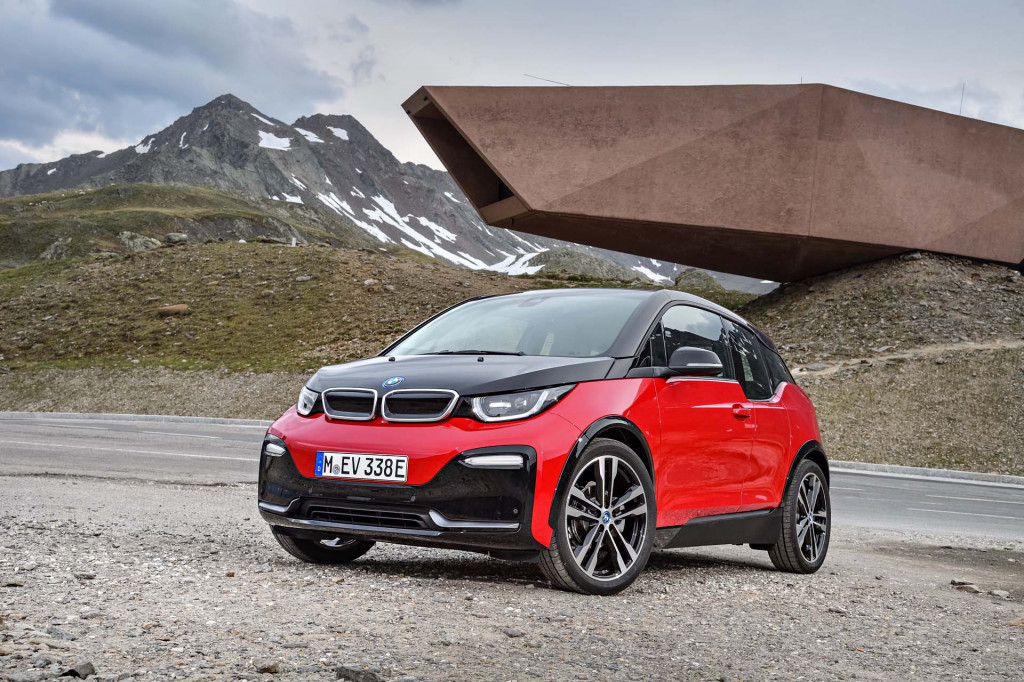Model naming conventions that are clear, consistent, and easy to understand across decades are a crucial part of explaining a vehicle lineup to buyers.
By and large, German makers are good at arraying their lineups of sedans (and now SUVs) in "series" or "classes" that run from smallest to largest.
The 2014 BMW i3 was something of an anomaly in BMW's lineup, because it didn't really correspond to the BMW 3-Series sedan known worldwide.
DON'T MISS: BMW will have 25 electric cars, plug-in hybrid models by 2025
Now, after a thorough 2016 reshuffle of its product plans for plug-in electric vehicles, BMW will yank its electric-car lineup into alignment with the vehicles it sells with internal-combustion engines.
Which is why, according to Car magazine from the U.K., today's BMW i3 will be replaced in 2022 or 2023 with what will become the BMW iX1.
The news, contained in a reader's tweet, lays out parts of a lineup of plug-in cars that will run parallel to next generations of the existing BMW range.
Worse than it appears. The next BMW i3, from the latest CAR magazine. @greenofrichmond pic.twitter.com/qhDQHDvYjE
— Jim Zellmer (@jimzellmer) January 23, 2018
Today's BMW i3 has an advanced carbon-fiber-reinforced plastic body shell, and the company went to great lengths to reduce the carbon footprint of the energy-intensive manufacturing process for the carbon fiber.
Owners of the current i3 may be distressed to learn that its successor, according to the future model lineup suggested by Car, will use a structure made of stamped steel—most likely with a few crucial pieces made of other metals or carbon fiber, as in the latest BMW 7-Series large sedan.
Rather than the dedicated aluminum platform containing the running gear and crash structures, the future BMW iX1 will use the FAAR front-wheel-drive platform that also underpins the Mini Cooper range and today's BMW X1 small crossover, with all-wheel drive provided by a rear electric motor.
READ THIS: BMW 'i' electric-car sub-brand to expand into SUVs, utility vehicles, with 'iX' models
In due course, the new BMW iX1e will likely be followed by a sportier iX1s variant, Car says, mirroring the 2018 BMW i3s that was introduced in the i3's fifth model year to complement the standard model.
BMW's apparent retreat from advanced, expensive, ground-breaking technology indicates how fast the cost of lithium-ion battery cells has come down since its engineers froze the specs for the i3 in 2012 or so.
New battery-electric vehicles with a minimum of 200 miles of range or more no longer need to go to extraordinary lengths to minimize battery capacity to reduce every costly extra kilowatt-hour.

2018 BMW i3s
Instead, they can add battery capacity to offset the weight increase of standard stamped-steel construction over the lightweight but pricey CFRP body shell and all-aluminum underpinnings.
We would suggest BMW's retreat in technology indicates higher volumes for the i3's successor than the current car has delivered to date.
And even the happiest of BMW i3 owners will admit that the advanced high-tech vehicle's unusual design, a small size in North American terms, rear carriage doors that rear-seat passengers couldn't open without help from the driver, and other unique aspects make it something of an acquired taste.
CHECK OUT: 2018 BMW i3s: range, efficiency lower for sportier model of electric car
The Car report suggests that the next BMW i3 in 2021 or so will be the much-rumored all-electric version of the well-known BMW 3-Series sedan—or at least an electric model of similar size, features, and performance.
The first of BMW's next series of plug-in electric cars, however, is expected to be the BMW iX3, an all-electric version of the BMW X3 compact crossover utility. It's expected to arrive next year or in 2020.
[hat tip: Brian Henderson]
NOTE: The photo of a 2017 BMW i3 range-extended electric car in Protonic Blue that leads off this article was taken by its owner, Chris Neff.
_______________________________________













